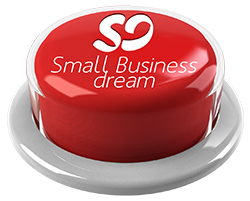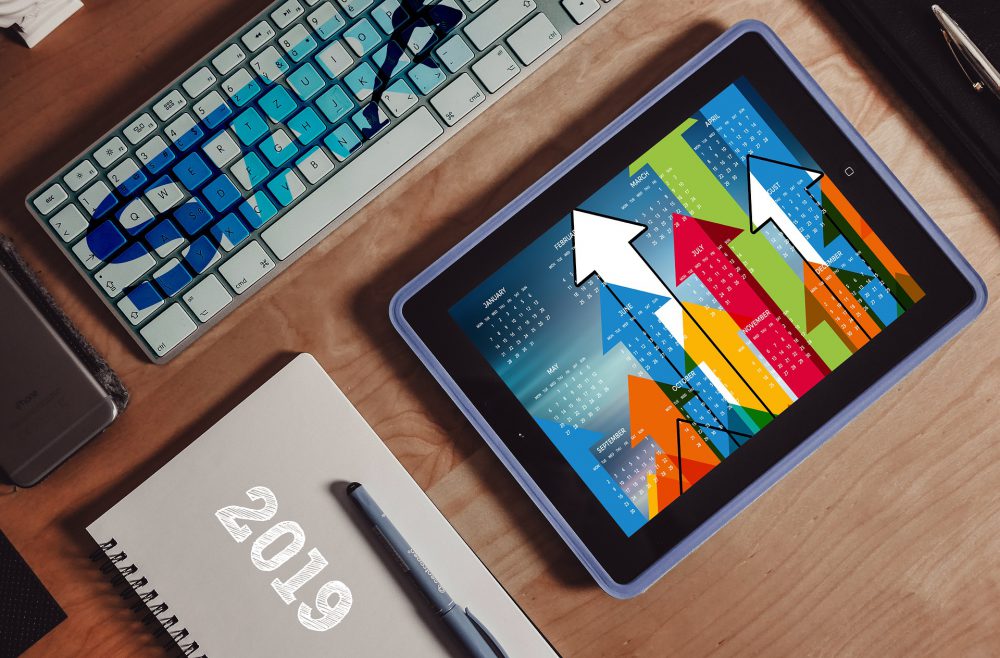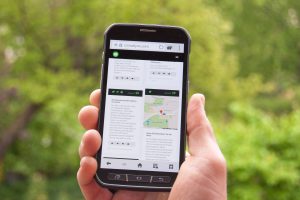Today is the topic that everybody knows they should do but nobody’s doing—follow-up. Most people fail in follow-up—restaurants, accountants. Heck, even my barber fails in follow-up.
So what exactly is a follow-up? Follow-up is a multiple-channel approach. In some studies, getting a customer takes a minimum of seven touches, while others say it’s around fifteen. But it’s going to take a whole bunch of reaching out to get a person from not interested, to engaging with you.
Most Businesses Don’t Follow-up Enough

Most people are able to do one or two follow-ups, and that’s where about 90% of businesses stop. You followed up but they didn’t answer your phone call. They’re not ready yet. They give you some excuse because they were too busy and didn’t really want to talk to you, so you never call them back. Or maybe you call them back one more time and you get their voicemail and you say to yourself, “That’s it. He must not be interested…he must hate me…he must not like me…he must know it’s me and they’re not responding…I must have done something wrong.”
All of our doubts come in because it’s easier to stop following up and make excuses. You’ve probably made these excuses yourself. I’ve done it many times, but I’ve also not made the mistake and had wonderful surprises. I had, for instance, found out that the guy had just gone on holidays and turned off the cellphone for three weeks, and he’s so happy that I called because now he’s ready.
Why Some Follow-ups Don’t Work

When it comes to follow-ups, one of the first things that a lot of business people think of is automation. They assume automation could do all the follow-ups for them, that they can just dump them into an email series and let it follow up them forever. “Oh, and I can make it HTML-formatted, and I can have banners and pictures and videos in all of my emails, ’cause that’ll make it better.”
Unfortunately, most people these days read their emails on their phone. Imagine you’re traveling in, say, the United States. You’re roaming, and somebody sends you an email. You opened it, and it starts to auto-play a video that’s sucking the life out of your roaming rates of your data package. You won’t be so happy, would you? Always be mindful of what you’re sending out in follow-ups.
What Makes a Good Follow-up?
1. Multiple touch. This is key when doing follow-ups. Multiple touch means if you’re phoning, make sure you have a system to remind you when to phone next and what you said last time. In amongst your phone calls, there should be some kind of an automated or semi-automated email going out or some LinkedIn reaching out going on.
2. Value-added. You really want to try to figure out a way to have ‘value-added’ follow-up. It’s not as simple as calling them up, asking if they’re ready to buy yet. You want to feed them helpful information. The 80/20 rule still applies in follow-ups. Eighty percent needs to be just good old-fashioned information—valuable, helpful stuff. Twenty percent can be your sales pitch. You don’t want an overt sales pitch. Writing a big long email that’s actually an underhanded ‘trying-to-be-a-sales-pitch-without-being-a-sales-pitch’ won’t work because your customers see right through that and would disengage.
Follow Up on Multiple ‘Touch Points’

Email nowadays takes about three and a half days on average to be opened and read. So again, it’s best to get some kind of a system. We recommend Small Business Dream, or some kind of follow-up system that’s going to deal with your automated emails, semi-automated emails, LinkedIn reach out, phone calls, and so on.
Whether you’re a fully digital company or not, phone calls is very much a part of business. Picking up the phone and talking to somebody is still one of your best ways to connect. It also helps move things forward. Have a system that lets you know who you need to call today and why, and what you said last time.
Have a proper contact manager working for you, one that’s connected to being able to send emails easily. Add them to a LinkedIn series or an SMS series, or in our case, we have the ability for clients to put an app on their customers’ phones and send push notifications directly to those people.
You really want to work on your follow-up, and follow up enough. Typically, 7 to 15 touches is the magic number. That means a phone call and an email, and then maybe another phone call and then a text message, and so on. You’ll never know which ones they’d prefer connecting to, so spread it around the medium. You need to divert your systems to only working that way but stay keeping in touch.
Build an Email Strategy

Tip #1: Create an email list
Everyone should have an email list. If you don’t have an email list, you’re losing probably one of the biggest pieces of gold. I don’t care what business you’re in. Collect an email list, whether it’s a free newsletter that’s going to give them tips and tricks on the stuff that you know about, or just a, “Hey, jump on our mailing list so that we can send you periodic updates about what we’re up to.” You want to cultivate that mailing list.
Tip #2: Semi-automate your messages
There are ways to automate text messages nowadays. The more effective method is doing a personalized text message. Automation works best if it goes undetected. Best way to do it is to not be completely automated. You can have a message that has the bulk of what you want to say and just put that one sentence that’s personalized. “Hi (insert name), it was so great seeing the other day at (insert place or event).” Once you have that mailing list, you really need to start using it, and use it differently whether it’s an existing customer or a prospect that might be a customer.
Tip #3: Connect often
Probably the number one mistake people make with their mailing lists of prospects is they don’t email often enough. “Oh, if I email them more than once a month, they’ll get angry and remove themselves.” This actually happens when you’re sending them content they don’t want. But if you’re giving them good value, they are more likely to stay.
Tip #4: Give them value each time
If I knocked on your door at 3 o’clock in the afternoon, and you opened the door and I handed you $100, would you be happy that you saw me? If the next day at 3 o’clock I knocked on your door and hand you $100, would you be happy? What would happen on the next day? You’d probably be standing by your door at 3 o’clock hoping that I would knock on the door because I’m giving you value every time.
Now what if I knocked on your door at 3 o’clock, and again at 5 o’clock with a hundred-dollar bill, would you open the door? You’d probably say to me, “Can you just come by like every five minutes? I got a couple of friends that are with me. You can knock on their doors too.” If you’re giving them value, they will open up that ‘door’ (your email) every time. If you’re not giving the value, they’ll unsubscribe.
Even if they’re not opening your email every time, they will create a nice neat little folder where all of your stuff gets dumped into, and when they’re ready to go and see what kind of good stuff you were sending, then they’ll go look. So, it’s important to be sending emails often enough with value.
Create Good Value for Less

If you’re thinking value is hard, you don’t have to have 395 pieces of value-generated content. You just start recycling it with different headlines. So now, when you send it over and over for the guy who did watch it twice or three times, and he still hasn’t bought yet, nothing is lost. He hasn’t bought anything anyway. But what about the guy that finally read that third time because the headline got him to open it, sees that information for the first time, and decides to engage with you?
We find the same thing on our previous blog on LinkedIn system. It’s not the first time we send them a message. Not the second time. It’s like two weeks, three weeks, a month later when they finally go, “Oh, you know what? I haven’t been on LinkedIn for the last two weeks. I just got your message.” And they know you mean business because you’re different than all the other people that click the ‘connect with me’ on LinkedIn button and never talk to them again.
Plain Text vs. HTML-Formatted Emails

We briefly talked about a nicely fully formatted HTML email versus not. As we said earlier, most people have their pictures turned off. They’ll not see your pictures and they don’t enable that on a download when they open up your email. Besides, when was the last time you’ve ever opened up a perfectly formatted HTML email that wasn’t trying to sell you something?
What’s really funny is you have a lot of software packages out there—emailing automation software packages—and in order to create value for you knowing that you don’t know what you’re doing, you’ve come to them to buy software to do it for you, and knowing that you’re most likely the person who thinks, “If I make it all graphically and pretty and corporate people will love it,” you’re likely to be very excited that you found a tool that you have a million templates in.
But when you actually a/b test emails and you send out fully HTML formatted with lots of graphics and all that kind of stuff, since most people are looking around a phone, it’s really hard to make it look good. And, again, you’re eating up their data.
But in the end, it doesn’t work because it’s an obvious app. Where if it’s a really quick, “Hey, I was just running out the door…” and you make a spelling error and, “I really just wanted to connect with you because I found this really cool article about bluefish,” and I know you’re the guy that loves bluefish, all of a sudden you’re going to get an engagement. You’re going to create a relationship over that, and that actually had nothing to do with what you sell.
Maybe it had a PS line, but probably not. If it has a PS line it needs to look like your iPhone had a PS line. So, fully formatted doesn’t usually work. Simple, to the point, well-written, copywritten emails with the right word balances, and a message that feels good for the person receiving it, gives them help is a lot better. You may, however, send one every ten emails that’s HTML-formatted.
Examples of Follow-ups and Key Takeaways for your Small Business
1. Carpet Store
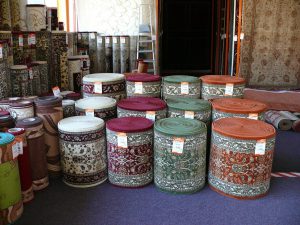
We did a follow-up series for a carpet store—one at three months, one at six months and one in a year. It took us ten minutes to write, cost us zero dollars to add to the system, and it would go out fully automatic. He was reluctant because he thought that if somebody doesn’t buy carpet when they come into a carpet store and they don’t buy it within the month, they’ve already gone somewhere else. They’re not going to buy from him.
Our argument was, with Vancouver’s real estate and the cost of housing, building permits take forever to get. So, to legitimately do a complete reno that might be a whole house-full of carpet, you might be six months before you get the permit to allow you to even install the carpet. Long story short, after implementing this within a very short period of time, somebody got the 3-month email, their permits came just in for a $14,000 sale.
It’s typical in the carpet industry to have commission somewhere between 8-10%. It was a pretty significant amount of money for just putting in a little email. And I have to say, that steak and lobster that I received as a ‘thank you’ for pushing him to make that email is one of the finest in Vancouver.
2. Software Business

In our MLM software business, we have email follow-up of prospects. The record is set at about eleven years before someone was finally ready. We didn’t even send enough emails. Nothing for months at a time. Eventually, we only sent them an annual follow-up. We didn’t know back then that I could pester them every single day and it’ll just be ignored until they’re ready, or they’ll remove themselves.
But who cares? It makes no difference because they’re not a customer. But when you’re the only person following up, they knew the customer service would be there as well. (Same thing happened in the carpet store. Even though the carpet may not have been the cheapest, but the follow-up was there. The customer service was there at the beginning.)
You’re setting precedents that you care enough. The Small Business Dream system sends out a ‘Happy Birthday’ card, a ‘Merry Christmas’ card, and it used to send out anniversary cards (we stopped sending anniversary cards because people sometimes get into marital strife or divorce and we’re inadvertently picking at the scab). We are now doing LinkedIn’s method of anniversary and consider anniversary to be their work anniversary, or the anniversary of when you first signed up to our newsletter.
All of these were just things that made somebody, after 11 year goes, “You know what? You send me a birthday card every year and you’re so amazing.”
3. Real Estate

I bought eight rental properties, which turned out cash flow positive—all from separate real estate agents. Why? I have a rule as a salesperson and as a student of loving selling. I don’t want to do business with someone who doesn’t follow up. When they did follow up, they were following up with comparables in the area or some very obvious super-canned RE/MAX or Century 21 system that they’re connected to, and it wasn’t personal. It didn’t teach me anything, and they weren’t like, “Hey Dennis, how’s the rental property working out for you? Did you find tenants?” Nothing…just gone. So, I would buy the next one from the next guy, hoping he’d follow up. Not one had followed up after the sale, or if they had, they’d followed up in a way that was completely disengaging.
One of the things we teach in the book, the Small Business Profitability Secrets is how to be a better realtor and how to frame your words your customer likes. Real estate agents need to make that point to their clients. The problem is their clients have no idea what the difference is, nor do they care to hear the explanation.
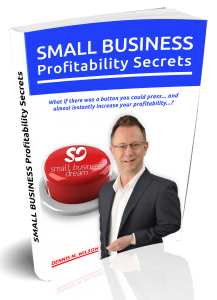
We came up with a different way of follow-up that helps realtors like crazy—it becomes a home maintenance tip list. It’s a free thing that everyone can sign up to. It sends them out in the summertime and what summer home maintenance things you can be doing. Just before winter it tells you, “Hey, maybe you should get your furnace checked,” or maybe, “You should get your air conditioner checked…you should get your carpets cleaned two years after you bought your house.” It just gives a bunch of stuff that makes everybody excited to get your next email because it’s going to remind them about something to keep their house in tip-top shape.
So that means they stay engaged for seven years. Not only they stay engaged, but they refer their friends to your amazing house tip. Now you’ve got people telling people about you, and you’re in their face all the time once a month, twice a month. You’re in their face with things that are beneficial to them. Who do you think they’re going to call when they hear someone saying, “I need to find a real estate agent broker”? They’re going to find the persons that was following up.
Final Thoughts
Most people make a big mistake of stopping their follow up when they make the sale. They think, “That’s it…sale’s done…I don’t need to follow up.” You need to continue if they’re on your initial prospecting list, offering things and constantly educating them. If, for instance, they turned into a product-specific customer, obviously that one would stop once they purchased it, unless it’s something that can be repurchased.
It really depends what it was after the sale. Is it a re-purchasable item and you need to remind them every month to get it again, or is it something that you buy once every seven years? If so, then you better find a way to keep them interested in you for seven years for when they’re ready to buy again.
You need to have the ability, once the sale is made, to decide, “Are you sending them into training for that product? Are you just continuing with the general newsletter that gives lots of value and promotes every new thing you have to them every now and then when it’s there?” It really depends. But there’s no question about you needing to follow up on them after the sale was made. Follow up is critical to business. Talk to sales and marketing automation expert about how you can make sure you follow up after the sale because that’s actually where the gold is. Getting them the first time is very expensive. You better keep selling to them. Check us out at smallbizdream.com where you can learn more about our Small Business Sales Blueprint.






